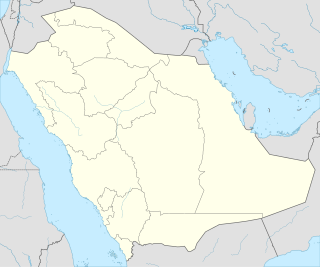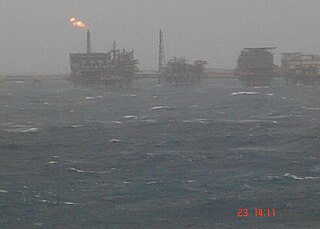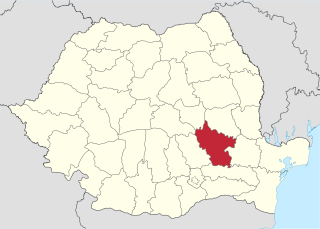
Ghawar is an oil field located in Al-Ahsa Governorate, Eastern Province, Saudi Arabia. Measuring 280 by 30 km, it is by far the largest conventional oil field in the world, and accounts for roughly a third of the cumulative oil production of Saudi Arabia as of 2018.

Cantarell Field or Cantarell Complex is an aging supergiant oil field in Mexico. It was discovered in 1976 after oil stains were noticed by a fisherman, Rudesindo Cantarell Jimenez, in 1972. It was placed on nitrogen injection in 2000, and production peaked at 2.1 million barrels per day (330,000 m3/d) in 2004. In terms of cumulative production to date, it is by far the largest oil field in Mexico, and one of the largest in the world. However, production has declined since 2004, falling to 408,000 barrels per day (64,900 m3/d) in April 2012, making it Mexico's second fastest production rate oil field after Ku-Maloob-Zaap.

A barrel is one of several units of volume applied in various contexts; there are dry barrels, fluid barrels, oil barrels and so on. For historical reasons the volumes of some barrel units are roughly double the volumes of others; volumes in common usage range from about 100 to 200 litres. In many connections the term "drum" is used almost interchangeably with "barrel".

Tengiz field is an oil field located in northwestern Kazakhstan's low-lying wetlands along the northeast shores of the Caspian Sea. It covers a 2,500 km2 (970 sq mi) project license area which also includes a smaller Korolev field as well as several exploratory prospects.
Petróleo Brasileiro S.A. — Petrobras, more commonly known as simply Petrobras, is a semi-public Brazilian multinational corporation in the petroleum industry headquartered in Rio de Janeiro, Brazil. The company's name translates to Brazilian Petroleum Corporation — Petrobras.

Oil reserves denote the amount of crude oil that can be technically recovered at a cost that is financially feasible at the present price of oil. Hence reserves will change with the price, unlike oil resources, which include all oil that can be technically recovered at any price. Reserves may be for a well, a reservoir, a field, a nation, or the world. Different classifications of reserves are related to their degree of certainty.

Prudhoe Bay Oil Field is a large oil field on Alaska's North Slope. It is the largest oil field in North America, covering 213,543 acres (86,418 ha) and originally containing approximately 25 billion barrels (4.0×109 m3) of oil. The amount of recoverable oil in the field is more than double that of the next largest field in the United States, the East Texas oil field. The field is operated by BP; partners are ExxonMobil and ConocoPhillips Alaska.

The Bakken Formation is a rock unit from the Late Devonian to Early Mississippian age occupying about 200,000 square miles (520,000 km2) of the subsurface of the Williston Basin, underlying parts of Montana, North Dakota, Saskatchewan and Manitoba. The formation was initially described by geologist J.W. Nordquist in 1953. The formation is entirely in the subsurface, and has no surface outcrop. It is named after Henry Bakken, a farmer in Tioga, North Dakota, who owned the land where the formation was initially discovered, during drilling for oil.

The impact of the petroleum industry in China has been increasing globally as China is the fourth-greatest oil producer in the world.

The proven oil reserves in Saudi Arabia are the 2nd largest in the world, estimated to be 268 billion barrels, including 2.5 Gbbl in the Saudi–Kuwaiti neutral zone. They are predominantly found in the Eastern Province. These reserves were the largest in the world until Venezuela announced they had increased their proven reserves to 297 Gbbl in January 2011. The Saudi reserves are about one-fifth of the world's total conventional oil reserves, a large fraction of these reserves comes from a small number of very large oil fields, and past production amounts to 40% of the stated reserves.
As of 2007, the proven oil reserves in Mexico were 12.4 billion barrels. The US Energy Information Administration estimated Mexican proved reserves to be 10.3 billion barrels as of 2013.
The Gura Ocniței oil field is a giant oil field located in Gura Ocniței, Dâmboviţa County. It was discovered in 1900 and developed by Petrom. It began production in 1905 and produces oil. The total proven reserves of the Gura Ocniței oil field are around 1.87 billion barrels (255×106tonnes), and production is centered on 64,000 barrels per day (10,200 m3/d). The oil field located in Gura Ocniței is the largest in Romania and produced around 1 billion barrels since its commercial opening.

The FPSO Noble Seillean was a dynamically positioned floating oil production, storage and offloading vessel.
The Țicleni oil field is an oil field located in Țicleni, Gorj County. It was discovered in 1940 and developed by Petrom. It began production in 1940 and produces oil. The total proven reserves of the Țicleni oil field are around 30 million barrels (4.39×106tonnes), and production is centered on 4,500 barrels per day (720 m3/d). The oil field is expected to produce around 9,000 barrels per day (1,400 m3/d) by 2015.
The Suplacu de Barcău oil field is an oil field located in Suplacu de Barcău, Bihor County. It was discovered in 1956 and developed by Petrom. It began production in 1961 and produces oil. The total proven reserves of the Suplacu de Barcău oil field are around 310 million barrels (43.7×106tonnes), and production is centered on 8,500 barrels per day (1,350 m3/d). The owning company Petrom will invest €200 million in the redevelopment of the Suplacu de Barcău oil field and a further 70 million barrels (10.24×106tonnes) of oil will be made available thus increasing the total reserves at 310 million barrels (29.26×106tonnes).
The Lopushna oil field is a Ukrainian oil field that was discovered in 1983. It began production in 1983 and produces oil. The total proven reserves of the Lopushna oil field are around 45 million barrels (6.4×106tonnes), and production is centered on 2,000 barrels per day (320 m3/d).

Primary energy use in 2009 in Iraq was 374 TWh and 13 TWh per million persons.
The Năeni oil field is an oil field located in Năeni, Buzău County. It was discovered in 2006 and developed by Toreador Resources. It will begin production in 2015 and will produce oil. The total proven reserves of the Năeni oil field are around 50 million barrels (6.6×106tonnes), and production will be centered on 1,000 barrels per day (160 m3/d).
The Lapoș oil field is an oil field located in Lapoș, Prahova County, Romania. It was discovered in 2006 and is being developed by Toreador Resources. It began production in 2015 and produces oil. The total proven reserves of the Lapoș oil field are around 40 million barrels (5.3×106tonnes), and production will be centered on 1,000 barrels per day (160 m3/d).
The Salcia oil field is an oil field located in Salcia, Prahova County. It was discovered in 2006 and developed by Toreador Resources. It will begin production in 2015 and will produce oil. The total proven reserves of the Salcia oil field are around 25 million barrels (3.3×106tonnes), and production will be centered on 5,000 barrels per day (790 m3/d).












